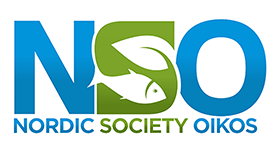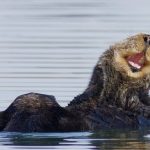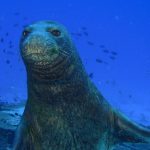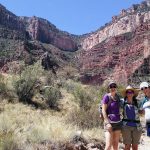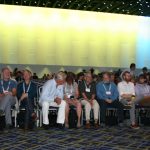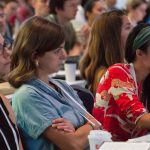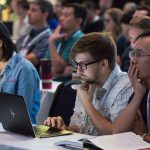Field Trip 1
Restoring Southern California’s Largest Marine Estuary, the Sites, the Sounds, and Research of the Upper Newport Bay
Monday, August 2, 2021, Noon – 1:00 PM PDT
Established in 1975 by a grassroots effort, the Upper Newport Bay (UNB) is Southern California’s largest marine estuary. Just 20 miles south of Long Beach, CA, UNB protects several state and federally endangered species. The 1,000-acre property is a refuge for plants and wildlife imperiled by coastal development. On our tour of UNB, we will start at the Back Bay Science Center (BBSC) to watch the live stream of our resident Osprey (Pandion haliaetus) nest. By kayak, we will visit several restoration projects led by the Newport Bay Conservancy (NBC). Despite being fully protected from future development, UNB is threated by future sea level rise and other disturbances. Without active management and planning, much of the salt marsh could be inundated by the next century. Fortunately, UNB is owned and managed by California Department of Fish Wildlife (CDFW). Successful management relies on coordination with NBC, Orange County Parks, and the City of Newport Beach. On our tour we will discuss how government agencies and landowners collaborate to solve environmental issues related to invasive species, altered hydrology, and sea level rise. We will conclude our tour with tips for kayaking and volunteering in the UNB. Join us on this adventure into Southern California’s largest marine estuary!
Organizer:
David Banuelas
Field Trip 2 – CANCELLED
Understanding the Role of Pioneer Tree Species Dominance on Forest Restoration Outcomes: Live Showcase of a Restoration and Rewilding Experiment in Costa Rica’s Osa Peninsula
Monday, August 2nd, 2021, 12:00 – 1:00 PM PDT
Get immersed in Osa Conservation’s paradigm-changing ecological restoration experiment in one of Central America’s last wild places and biodiversity hotspots, the Osa Peninsula in Costa Rica. To develop resilient and sustainable restoration strategies in the long term, it is also key to maximize species diversity in restoration efforts. Thus, understanding how trees respond to changes in the dominance and diversity of neighboring tree species is crucial to guide decision makers and conservation practitioners towards a cost-effective restoration method that can be scalable and effective in recovering forest structure, function, and wildlife. Reforestation experiments, where tree species interactions can be manipulated, offer unique opportunities to evaluate the outcomes of these different restoration strategies.
This experiment aims to facilitate forest regeneration in the tropics through active reforestation using native fast-growing pioneer trees and passive rewilding techniques. In 2017, we planted ~20,000 trees of 60 native species in 40 0.5-ha plots. To understand the role of pioneer tree species dominance on tree growth and survival, we established four treatments where the abundance of the native broad-leaved pioneer tree Ochroma pyramidale (balsa) was manipulated (75% balsa, 33% balsa, 0% balsa, and natural regeneration).
Data has been collected to monitor treatment effects on soil composition, biodiversity and tree growth. Just four years old, the plots already show clear differences in forest structure. Join us for this virtual field trip to explore the restoration site and our native tree nursery.
Organizer:
María José Mata-Quirós
Co-organizer:
Carolina Pinto
Field Trip 3
A Visit to CSU’s Desert Studies Center at Zzyzx in the Mojave National Preserve
Monday, August 2nd, 2021, 3:30 – 4:30 PM PDT
On this tour, we’ll get a look at the California State University Desert Studies Center field station and its environs. We’ll highlight research and education opportunities at the Center and in the Mojave National Preserve. The Center sits in a biodiversity hotspot surrounded by abundant perennial springs, rugged mountains, sand dunes, salt sinks, and high plateaus. The Center hosts thousands of students and researchers annually from California and around the world.
- We’ll start with a quick tour of the Center itself. We show the natural mineral springs that attracted a mid-century snake-oil salesman to build a small health resort. We’ll walk through the quirky resort that now houses the Desert Studies Center and highlight amenities available to visitors.
- Second, we’ll demonstrate some of our hands-on learning opportunities, including field experiences for students at all levels. Demonstrations include one-day mini research projects, as well as an upper-division interdisciplinary environmental science field course.
- Third, we’ll do a three-stop geology road tour. We’ll visit Paleozoic, Mesozoic, and Cenozoic formations, show fossils, and discuss ecology from those periods, and show present-day plant communities.
- Finally, we’ll close with an in-depth tour of a multi-decadal herpetological community study, which demonstrates the effects of geologic substrate and a changing climate on endemic reptile communities living on a characteristic Mojave Desert bajada.
Each of these segments will include a pre-recorded tour with CSU professors and Center staff, followed by facilitated live Q&A.
Organizer:
Anne E. Kelly
Co-organizers:
Jason Wallace, Terrence McGlynn
Field Trip 4 – CANCELLED
Connecting with the Urban Environment
Monday, August 2nd, 2021, 3:30 – 4:30 PM PDT
This trip will highlight the importance of ecosystem services (ES) in urban environments. Often overlooked in their environmental importance, urban environments can provide ES needed to survive. Attendees will learn about work the organization Houston Wilderness is doing to increase ES in Houston, Texas through large-scale native tree plantings.
Facilitated by HW, the Port of Houston Trees and Riparian Enhancement of Ecosystem Services (PoH TREES) program, is a collaboration to enhance ES through targeted large-scale native tree plantings along 25 miles of the Houston Ship Channel which is heavily industrialized. HW will discuss the unique practice of using “Super Trees” planted under this program which maximizes the benefits being derived from tree plantings. Attendees will learn how to target, quantify, and calculate tree species’ ES and practice by answering questions calculating ES under different scenarios. Walking away attendees will be able to apply this practice in different scenarios such the trees of their region.
In field HW staff will take attendees to the primary POH TREES tree planting location which is on Port Houston property and is surrounded by industrialization and residential areas. Attendees will see thousands of planted native trees and “plant” a Super Tree of their own. Finally, attendees will be shown how HW is tracking inventoried and planted trees through GIS software and their associated ES metrics.
Organizer:
Bailey Rohde
Co-organizer:
Deborah January-Bevers
Field Trip 5 – CANCELLED
“Cerro de Agua” Healing Activities
Tuesday, August 3rd, 2021, 12:00 – 1:00 PM PDT
MonteAlto ” Cerro del Agua” State Park is a pine-oak forest located in Valle de Bravo, Mexico. A fire severely damaged the forest in 2018; since then, citizens have gathered to rescue the land and prevent the bark beetles outbreak.
The purpose of the trip is to present the citizen effort to revert the impact of the 2018 fire in Monte Alto and stop the severe bark beetle outbreak.
https://www.facebook.com/ComiteCiudadanoProANPMonteAlto
Organizer:
Luisa Elena Matias
Co-organizer:
Claudia Suarez
Field Trip 6
Coyote Creek Field Station: Bird Banding in Restored Habitat in Silicon Valley
Tuesday, August 3rd, 2021, 12:00 – 1:00 PM PDT
Band birds with us at Coyote Creek Field Station! Just south of the San Francisco Bay, surrounded by Silicon Valley’s urban sprawl, we band birds year-round in a little oasis of wildlife habitat. You will visit a rare remnant of unmodified riparian woodland, two wooded areas that were restored from pear orchard in ‘87 and ‘93, and grassland. Through videos and photos, you will meet a variety of the birds we catch in these habitats and see the data collection process. You will hear from staff at San Francisco Bay Bird Observatory, the nonprofit that runs the field station, about how they found themselves in wildlife conservation, and from the volunteers at the field station about how they came to bird banding and what their training was like. There will be opportunities for questions and discussion. We will touch on topics including: the hows and whys of bird banding; long-term datasets (the field station has been banding birds since the early ‘80s); habitat restoration; fieldwork in an urban area; scientific research in a nonprofit; and engaging community members as researchers. Come for the scientific discussion – or just to spend some time with birds and people who really like birds.
Organizer:
Katie LaBarbera
Field Trip 7
Virtual Tour of the SPRUCE Whole-Ecosystem Warming By Elevated CO2 Experiment
Tuesday, August 3rd, 2021, 3:30 – 4:30 PM PDT
The tour will provide all participants a virtual visit to the Spruce and Peatland Response Under Changing Environments (SPRUCE) experiment and participate in active discussion of the ongoing research and research findings to date. The SPRUCE experiment is a US DOE-funded complex large-scale temperature by elevated CO2 manipulation study located within an ombrotrophic bog, regrowth forested peatland in northern Minnesota. Participants will get to virtually experience the complexity and size of the SPRUCE experiment via overflights, video walk throughs of the site and warming enclosures, and a combination of video and slide-based discussions of the various measurement systems used to assess microbe-to-tree responses to the manipulations. We will also include a summary of working hypotheses and discussions of the findings of the SPRUCE research group after more than 5 years of continuous manipulations. More details on SPRUCE may be found at http://mnspruce.ornl.gov.
Organizer:
Paul J. Hanson
Co-organizer:
Misha Krassovski
Field Trip 8
Where in the World?: A Mystery Field Trip across the USA
Tuesday, August 3rd, 2021, 3:30 – 4:30 PM PDT
In this mystery field trip, viewers will visit multiple locations across the USA and meet researchers from several biological field stations. In the spring of 2020, members of the Organization of Biological Field Stations (OBFS) came together to form The Virtual Field (www.thevirtualfield.org), a collaborative online platform for field stations, marine labs, and universities to engage undergraduate students through both pre-recorded and live virtual events. In this presentation, we will highlight the group’s ‘Ecosystem Exploration’ videos and engage participants with challenges to evaluate the locations and habitats they see. Viewers will also have the chance to directly ask questions of the participating researchers.
Organizer:
Dustin Angell
Co-organizers:
Hilary Swain, Beth Norman, John W. Wenzel, Angelica Patterson, Itchung S Cheung, Claudia Luke
Field Trip 9
Into the Clouds: The Alpine Environment of the Uncompahgre Fritillary Butterfly
Wednesday, August 4th, 2021, 12:00 – 1:00 PM PDT
Join the recovery team of the Federally Endangered Uncompahgre fritillary butterfly (Clossiana improba acrocnema) on a field trip into the alpine tundra of the San Juan Mountains in southwest Colorado. Climb above tree line to elevations 13,000ft above sea level to the habitats of the Uncompahgre fritillary to the study sites of the second longest consecutive invertebrate study in the world. U.S. Forest Service, U.S. Fish and Wildlife Service, the U.S. Bureau of Land Management, and Western Colorado University have visited study sites each summer since 2003 to better understand why this alpine pollinator is considered on the “brink of extinction”. Threats of biodiversity loss due to climate change are predicted to especially impact the alpine tundra ecosystems including the well-adapted flora and fauna. The concern for this endangered species connects with the worldwide concerns of climate change impacts to ecosystem structures and functions from altered temperature and precipitation patterns. Participants will be taken along rocky terrain to the popular 14er hikes of Uncompahgre Peak and Redcloud Peak that comprise the known range of this rare, endemic species. They will follow a normal field crew work day learning about the history of this project, how population sizes are estimated, and the importance of preserving this indicator species and its connection to the health of alpine tundra ecosystems.
Organizer:
Andrea Williams
Field Trip 10
The Los Angeles River: Exploring Urbanized River Biodiversity Using Environmental DNA (eDNA)
Wednesday, August 4th, 2021, 12:00 – 1:00 PM PDT
The heavily modified Los Angeles River has been the inspiration for dozens of advocacy organizations, projects, and events since the late 1970s. Over 90% of the river has been channelized for flood control since the 1940s, but recent modifications have been made towards community recreation. With the LA River Master Plan being renewed for the 1st time since 1996, river stakeholders have noted that its biodiversity remains unclear. The CALeDNA program, a community science initiative from the University of California system, has partnered with river stakeholders to study the biodiversity of the river using environmental DNA (eDNA) from soil, sediment, and water samples. By looking at both eDNA results and data from river stakeholders, we take a closer look at how truly diverse the river is not just in habitat but in biological communities.
For this trip, attendees will visit several of our study sites from the river varying in levels of channelization, modification, and recreation use. The CALeDNA team will demonstrate how samples are collected in the field and highlight how collection techniques vary at each site. Attendees will get to see the river’s bike paths, pocket parks, and see where the river meets the Pacific Ocean at Long Beach (not far from the convention center where the annual meeting is based). In addition, folks will have the opportunity to visit biodiversity hotspots that are popular for bird watching, fishing, and mushroom hunting.
Organizer:
Miroslava Munguia Ramos
Co-organizer:
Maura Palacios
Field Trip 11
Big Wall Ecology in Yosemite
Wednesday, August 4th, 2021, 3:30 – 4:30 PM PDT
Yosemite Valley, located in the central Sierra Nevada of California, is famous for its massive glacier-cut granite walls. When viewed from below, the one-thousand-meter-tall cliffs appear vast and lifeless. However, a rich diversity of organisms call these vertical ecosystems home. Join Yosemite Field Station Director Dr. Breezy Jackson and special guests on an exploration of an ecosystem few visit. We will zoom in on cliffs, cracks, and crevices perched high above the valley floor to encounter lichens that eat rocks, flowers with monkey faces, gravity-defying reptiles and amphibians, and the fastest animals in flight.
Organizer:
Breeanne K. Jackson
Field Trip 12
The Sonoran Desert: Stories of the Continuing Evolution of a Species – Carnegiea gigantea
Wednesday, August 4th, 2021, 3:30 – 4:30 PM PDT
The Sonoran Desert covers approximately 100,000 square miles and includes most of the southern half of Arizona, southeastern California, most of Baja California peninsula, the islands of the Gulf of California, and much of the state of Sonora, Mexico. The Sonoran Desert is home to some 2,000 species of plants, but the sentinel of the desert, the long-live columnar saguaro cactus (Carnegiea gigantea) and the hero in this story, has been studied with purpose since at least 1867. Research studies have focused on issues such as population declines and disease, nurse-plant microclimates, and how hydraulic lift from ground water could be an adaptive measure of the saguaro.
Travel the Sonoran Desert with Dr. Lee Ann Woolery, Research Director at Citizen Artist as she narrates this virtual field trip, stopping at central points in the Sonoran Desert, sharing stories of Carnegiea gigantea through interviews with known and unknown researchers with diverse areas of expertise on this iconic giant cactus. Although saguaros cover an expansive range of the Sonoran Desert, there are two strong holds for saguaro research, and we will visit them, the Carnegie Institution Desert Laboratory at Tumamoc and Saguaro National Park, both in Tucson, AZ. A diversity of research methodologies will be showcased including: conventional mapping and long-term inventory surveys, modern technologies such as digital aerial imagery to identify saguaro shadow signatures and algorithm programs to predict bark coverage, traditional ecological knowledge, and alternative art-based research methods.
Organizer:
Lee Ann Woolery
Field Trip 13
A Walk Through the Wilderness of Wayqecha Biological Station in the Peruvian Cloud Forest
Thursday, August 5th, 2021, 12:00 – 1:00 PM PDT
This Virtual Field Trip will take you to the Peruvian Cloud Forest, where Wayqecha Biological Station is located(2500-3400 m.a.s.l.): one of the world’s highest field stations and best sites to explore the lush cloud and elfin forest ecosystem bordering Manu National Park. Situated where the eastern slopes of the Andes meet the Amazon lowlands, the cloud forest absorbs moisture from passing clouds and is often blanketed in mist and fog. We will virtually take you to see where the Andean grasslands transition into lush cloud forests and montane forests below.
We will take participants to great heights: a walk across the 50m heigh canopy walkway where all trees are seen from above, exposing their beautiful epiphytes from a different angle, we will show a recap of an expedition through the Andean Highlands in a quest to find the endangered Spectacled Bear, to a tour of our stunning orchid trail with orchids that live only at these high altitudes.
This trip will show you what it’s like to perform research and field expeditions at such high altitudes, where oxygen is limited and UV-radiation is fierce. The virtual field trip will be filled with orchids, bromeliads, hummingbirds and spectacled bears, which play the lead role in the stunning ecosystem around Wayqecha Biological Station.
More info on the station and the managing NGO Conservación Amazónica – ACCA can be found here: Wayqecha Cloud Forest Biological Station
Organizer:
Ruthmery Pillco Huarcaya
Co-organizer:
Judith Westveer
Field Trip 14
The Great Experiment in Conservation – Ecosystem Research in Adirondack Park, New York
Thursday, August 5th, 2021, 12:00 – 1:00 PM PDT
The theme of this trip is The Great Experiment in Conservation. We will take you deep into the heart of the 2.4-million-hectare Adirondack Park in Upstate New York on historically Abenaki and Haudenosaunee homeland. The park is a blended landscape of public and private lands, protected wild space, industry, recreation centers and villages. Although wolves and cougars were extirpated, moose have naturally recolonized the Adirondacks, and predators like fisher, marten and coyote abound. The trip purpose is to explore lessons in ecosystem resilience, wilderness management, conservation, and long-term scientific study of forest, wetland and climate change.
The Adirondack Ecological Center (AEC) at Huntington Wildlife Forest (HWF) is a mountainous, 6,000 ha field research station. Our purpose is to explore HWF at the center of the largest intact wild space east of the Rockies. HWF contains natural and managed forested watersheds and supports a century of scientific observation and experimentation.
On our virtual tour we’ll walk through an unmanaged, old-growth forest to look for mosses, invertebrate and fungal symbioses. We’ll dive beneath the surface of a vernal pool, where amphibians race to develop as the water draws down. We’ll paddle a pristine lake amid the echoing calls of loons. We’ll visit a harvested forest where black bears seek out raspberries amid new growth in research plots. We’ll talk to scientists about land management, planning and policy and the interconnections of people and place.
HWF is operated by the State University of New York College of Environmental Science and Forestry.
Organizer:
Stacy McNulty
Field Trip 15
The Arroyo, Arundo, and an Increasing Presence of Beetles
Thursday, August 5th, 2021, 3:30 – 4:30 PM PDT
Arundo donax (Arundo) is a prominent invasive species found within the watersheds of Southern California. For the field trip, we will visit a restoration project in Orange County, California intended to reestablish aquatic resource area and function in sections of Arroyo Trabuco Creek that were previously overrun by Arundo. Currently in its fifth year of monitoring, we will walk through the methodology for the project implementation and challenges that have developed throughout the program. Some of these challenges include the introduction of ISHB, and we will discuss our approach to understanding its effects on our restoration project.
While there can be many variables to restoration projects, we also will highlight the benefits we are already seeing within a short period of time. We will also recommend programs to get more community support with restoration projects.
Organizer:
Anisha Malik
Field Trip 16
Virtual Field Trip: Archbold Biological Station and Buck Island Ranch in the Headwaters of the Florida Everglades
Thursday, August 5th, 2021, 3:30 – 4:30 PM PDT
Viewers journey through Archbold Biological Station’s 20,000 acres to visit multiple habitats and meet with our leading researchers including Dr. Hilary Swain, Dr. Betsey Boughton, Dr. Betsie Rothermel, Dr. Reed Bowman, and Scott Ward to learn about species such as Gopher Tortoises, Florida Scrub-Jays, and many endemic plants, and major research themes including agro-ecology, and fire ecology. You will visit pristine Florida scrub habitats on Archbold Biological Station and grasslands and wetlands at Buck Island Ranch, Archbold’s working cattle ranch. Archbold Biological Station is an independent non-profit organization focused on science, conservation, and education in the Headwaters of the Florida Everglades. Our scientists will explain how Archbold research drives conservation action throughout the region and beyond.
Organizer:
Dustin Angell
Co-organizers:
Hilary Swain, Elizabeth H. Boughton, Scott Ward, Reed Bowman, Betsie Rothermel




